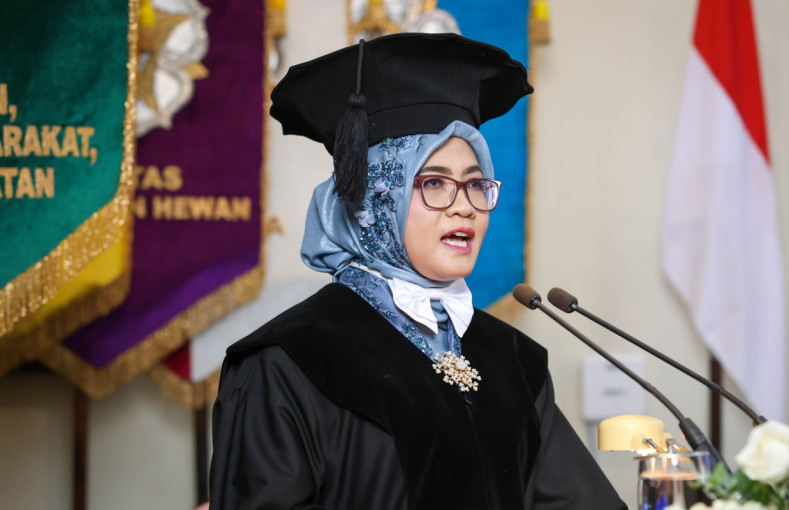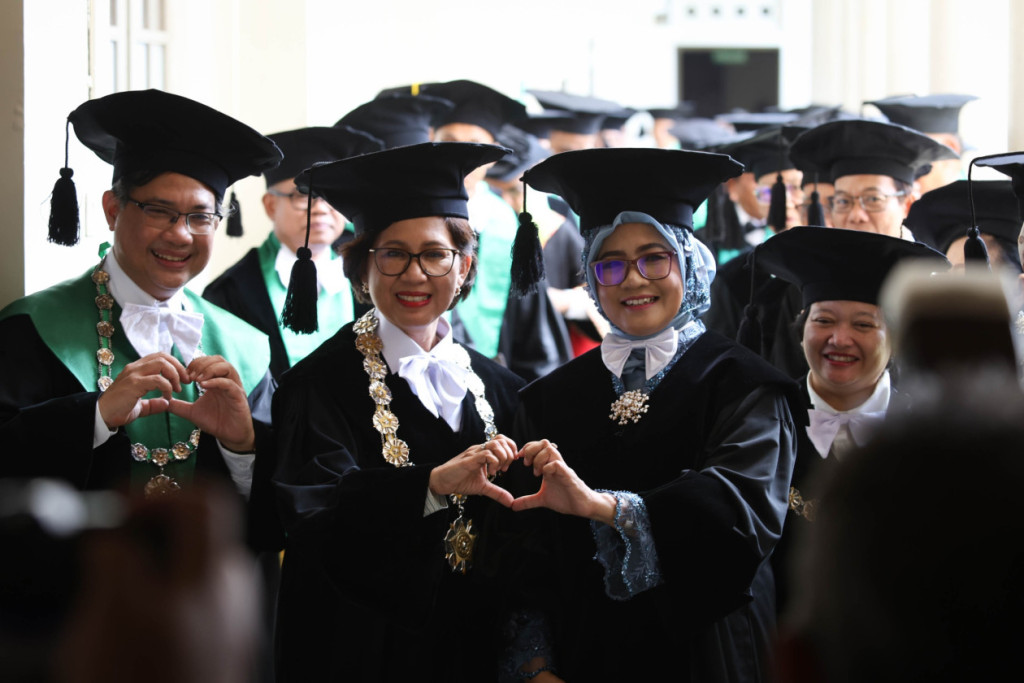
UGM Faculty of Medicine, Public Health, and Nursing (FK-KMK UGM) lecturer Professor Yunita Widyastuti was officially inaugurated as professor of anesthesiology and intensive therapy on Thursday (Feb. 6) at the Senate Hall of UGM’s Central Office.
During the inauguration ceremony, Professor Widyastuti delivered her inaugural lecture titled “Predicting the Risk of Severe Perioperative Critical Events to Improve Patient Safety in Pediatric Anesthesia Procedures.”
In her speech, Professor Widyastuti explained that perioperative critical conditions are respiratory, cardiac, allergic, or neurological complications requiring immediate intervention, which, if not promptly addressed, could lead to disability or death.
Anesthesia procedures for adults and children differ, and these differences make pediatric anesthesia procedures more prone to complications that can result in disability or death. Thus, a special approach is required to predict risks and mitigate them.
No predictive tools exist in Indonesia to forecast perioperative critical events in children.
“This has motivated me to raise this topic, so it can become a reference for predicting perioperative critical events in children in the future,” she stated.
Professor Widyastuti outlined several factors influencing severe perioperative critical events in children. In general anesthesia, newborns are at higher risk of perioperative critical events compared to other age groups due to their developing anatomy.
Data-based studies have shown that girls have a 25% higher risk of cardiovascular critical events compared to boys.
“Other influencing factors include congenital anomalies, which involve structural or functional body abnormalities present from birth, the patient’s condition, and the type of anesthesia used,” she explained.
A recent systematic review of perioperative risk assessment tools from 10 studies found that the accuracy of prediction scores for severe perioperative critical events varied, with mortality rates ranging from 0.3% to 3.6%.
These models use age at surgery, the need for mechanical ventilation within 48 hours before surgery, and oxygen support as the main predictors.
Other factors are inotropic support, sepsis, emergency case status, the presence of a “do-not-resuscitate” order, preoperative blood transfusion, cancer, hematologic disorders, physical status, and cardiopulmonary resuscitation before surgery.

Using perioperative critical event risk prediction tools is crucial in improving post-operative clinical outcomes in pediatric patients.
The latest development uses artificial intelligence (AI) to identify the risk of severe perioperative critical events.
Several studies have shown the benefits of machine learning in mapping post-operative complication risk factors.
According to Professor Widyastuti, assessing critical event risk is essential to minimize such risks. This effort should prioritize younger children.
“In Indonesia, there is a need for a standardized predictive tool to forecast the risk of perioperative critical events in children, as well as a simple and practical clinical guideline that is easy to use,” she emphasized.
The Rector of Universitas Gadjah Mada, Professor Ova Emilia, mentioned that Professor Widyastuti is one of 525 active professors at UGM and one of 72 active professors out of 102 professors that FK-KMK UGM has ever had.
Author: Jelita Agustine
Editor: Gusti Grehenson
Post-editor: Afifudin Baliya
Photographer: Donnie

